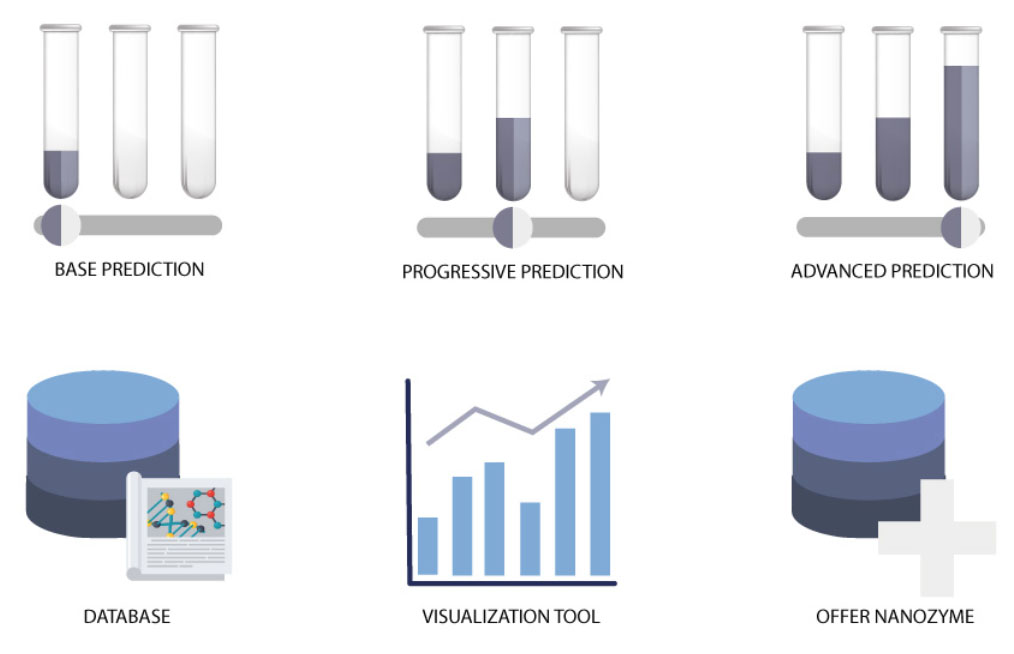| Jan 21, 2022 |
Researchers develop first ever online platform to predict artificial enzyme activity
(Nanowerk News) Researchers at ITMO University are the first in the world to develop a platform that predicts the catalytic activity of nanozymes, a type of artificial enzymes (Small, "DiZyme: Open-Access Expandable Resource for Quantitative Prediction of Nanozyme Catalytic Activity"). It takes seconds for the new algorithm to identify all the main reaction features and suggest the best conditions for running it. In the future, the platform can be used to develop new treatments and diagnostic systems.
|
|
In contrast to the natural enzymes, nanozymes are much more stable, easier to store, as well as cheaper and simpler in manufacturing. That’s why they are widely used in various fields from diagnostics and cancer treatment to environmental protection and biosensors.
|
|
If we can learn to predict which systems will ensure the ultimate effect of a given reaction, we will be able to significantly accelerate the process of producing new materials and biochemical systems. However, until recently, there weren’t any tools that could help researchers precisely predict enzymatic reactions of nanoparticles.
|
|
Scientists at ITMO University solved this problem with the open platform DiZyme that is equipped with a database of nanoparticles with their enzymatic activity, an interactive data visualizer, and AI algorithms. The latter can predict a reaction’s kinematic properties, such as its velocity and the affinity of its compounds.
|
 |
| DiZyme open access resource for quantitative prediction of nanozyme catalytic activity.
|
|
“Our service is tailored, first of all, to the study of nanoparticles with peroxidase activity. It’s a class of enzymes that catalyze oxidation of substrates with hydrogen peroxide,” says Julia Razlivina, the article’s first author and a Master’s student at ITMO. “We have accumulated quite a lot of data on such systems. Any user can open our website, enter a chemical formula and nanoparticle parameters, and then let the algorithm predict its activity in seconds.”
|
|
The new service will come in handy both for those looking to develop a specific material – the algorithm will produce activity limits for the material’s chemical formula – and fundamental researchers in the field.
|
|
“Moreover, the platform is not limited to peroxidase activity and can potentially be used for other reactions, which we are planning to do when there is enough digitized experimental data,” adds Nikita Serov, a co-author of the article and a PhD student at ITMO. “We are aiming to significantly accelerate experimental studies and minimize their costs. The more researchers use our platform, the better it will become.”
|
|
For instance, users can put in their system’s parameters to access plots illustrating particle activity changes depending on such conditions as pH level and temperature. This way, researchers will be able to predict a nanomaterial’s enzymatic activity even before running experiments. Regularly, these features have to be measured manually, which takes a lot of time and empirical testing.
|
|
“We wanted to demonstrate the model’s precision, and to this end we’ve selected 16 different samples and measured their peroxidase activity and compared the results to the ones produced by the platform. It turned out that the service matched our results almost ideally for 70% of samples, while for the other 30% the results fit into the accepted accuracy limit. This demonstrates the high precision level of our platform in predicting enzymatic activity,” adds Vladimir Vinogradov, head of ITMO’s SCAMT Institute.
|

